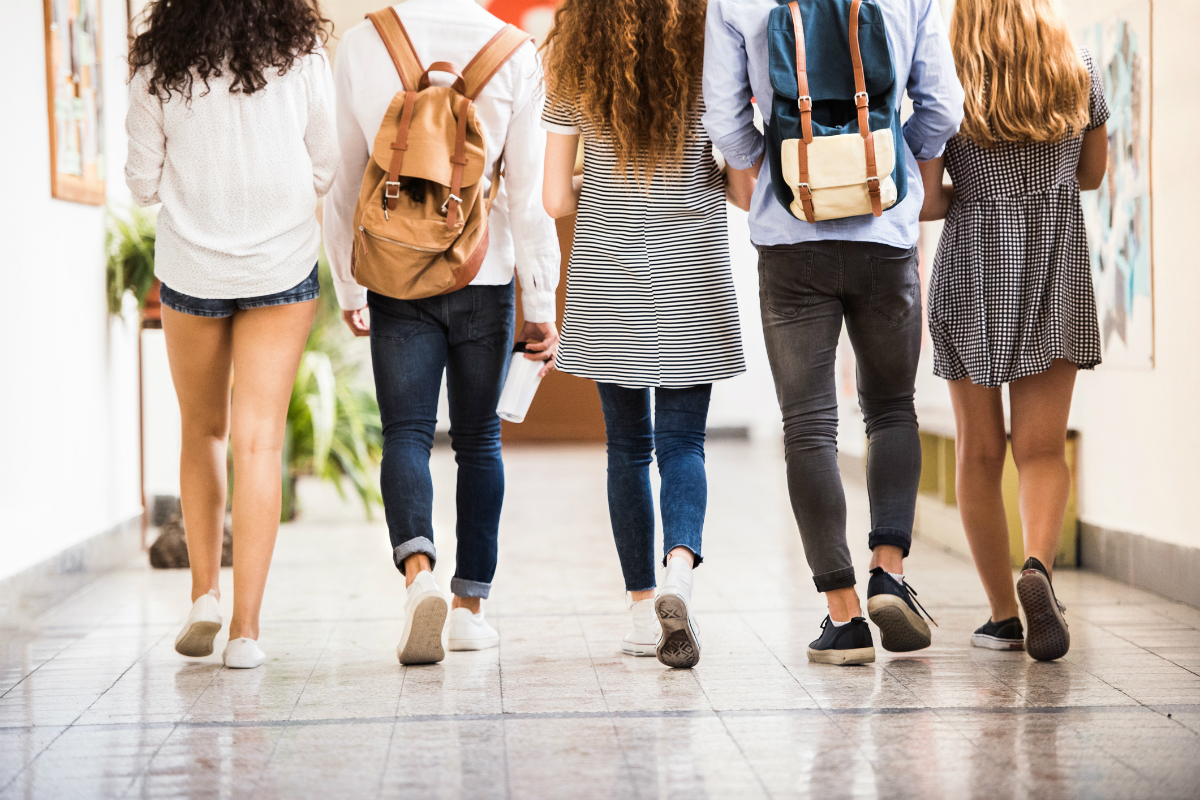As the classic Beatles tune goes, “I get by with a little help from my friends.”
To support students as they recover from the pandemic and beyond, a new report suggests educators endorse a similar sentiment and encourage peer connections as a tool for social-emotional well-being as well as academic and career success.
Peer Connections Reimagined was published by the Christensen Institute, a nonprofit, nonpartisan think tank, in early June. It highlights “emerging innovations,” opportunities and constraints for school leaders interested in nurturing student relationships.
“This year, K–12 schools, colleges, and universities have doubled down on their endeavors to support students through a global health crisis, economic uncertainty, severe weather, and political turmoil,” said Chelsea Waite, the report’s author. “Despite these efforts, research shows that support services still fall short of meeting many students’ needs. In the face of that shortage, some students have turned to an unexpected source of support: each other.”
Put simply, peer social capital is a powerful resource that is too often forgotten. When implemented, it can be a component of a robust strategy to help students succeed.
The report outlines four valuable roles that peers can play, including serving as social, academic, guidance and mental health supports for one another. Examples and programs for each category are available in the document.
Benefits of a peer network could be seen in the short- and long-term.
Mental health issues currently rank as the most common self-reported obstacle to learning for K–12 students — particularly among Black, Latino, Native American and multiracial youth, according to the report. Learners are adjusting to an ever-changing academic environment while schools try to accommodate their needs and make up for lost learning. Some have families who are facing financial or other hardships.
“Given how peers are a proven driver of student success and well-being, more schools should embrace peer networks as both the foundation for helping students rebound from the pandemic, as well as the fuel behind more student-centered support systems in the long run,” Waite said.
There are many approaches to making peer connections happen, but their success depends on where, how and why the networks are being rolled out by schools, according to Waite.
Five factors are identified in the report:
- Consider how to best improve services overall and offer more access, convenience and simplicity. Schools have an opportunity to tackle mental health, social, academic and guidance support shortages by activating their existing peer networks, Waite said.
- While students have been unable to have brief hallway interactions with peers due to campus closures, schools can effectively use online platforms instead to foster connection. This shouldn’t be viewed as a downgraded experience.
- Focusing on supporting meaningful relationship-building rather than just “brokering contracts.” Developing metrics to measure students’ social capital and peer relationships can help schools understand whether all students feel supported.
- As relationships gain value over time, schools should try to foster those connections and set them up to last throughout their academic careers into the workforce. This can be something as simple as creating an alumni group.
- Look to peer networks as a place for young scholars to develop soft skills like leadership and empathy.





